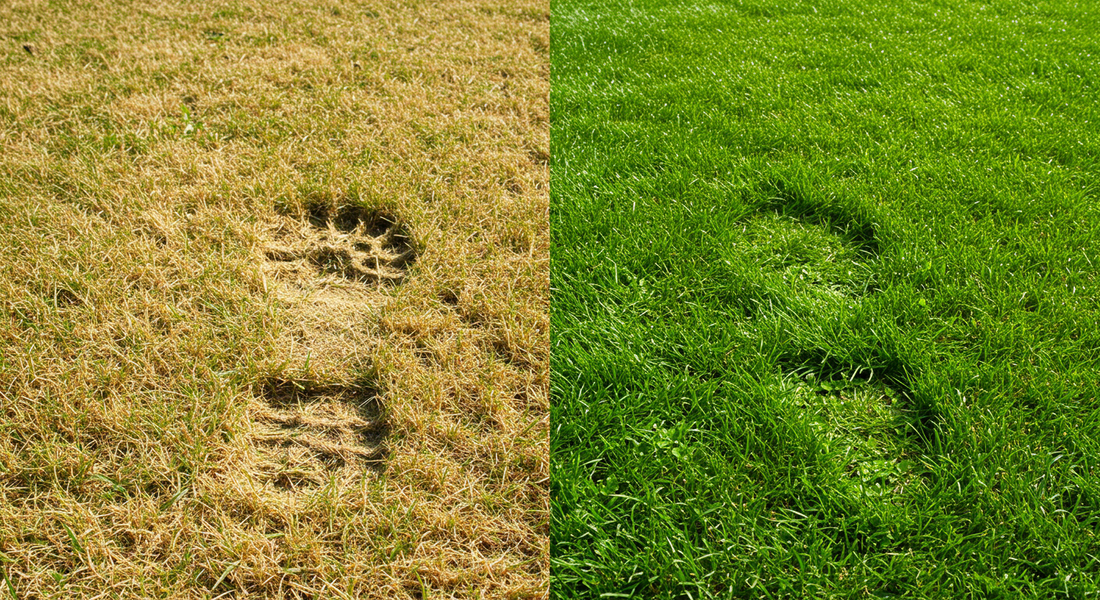
5 Common Summer Lawn Problems and How to Fix Them
Share
Summer should be a season of enjoying your lush, green lawn, not battling it. However, the combination of intense heat, heavy foot traffic, and unpredictable rainfall presents a unique set of challenges that can quickly turn your backyard oasis into a stressed, patchy landscape.
Surviving the summer heat wave requires a proactive approach. Understanding the most common problems and knowing how to respond is the key to a resilient, healthy lawn. This guide provides essential summer lawn care tips to help you diagnose and treat the five most frequent issues, ensuring your grass thrives all season long.
Problem 1: Brown Spots from Drought Stress
One of the most common sights in summer is the appearance of large, irregular brown spots in lawn areas. More often than not, this is a clear sign of drought stress.
-
How to Diagnose It: The simplest test is the "footprint" method. Walk across the brown patch. If your footprints remain pressed into the grass for a long time, the grass blades lack the moisture needed to spring back. Another sign is a bluish-gray tint to the grass just before it turns brown.
-
The "Deep and Infrequent" Watering Method: The solution is not to water more often, but to water more effectively. Instead of a light, daily sprinkle, water your lawn deeply once or twice a week. The goal is to apply about one inch of water per session, which encourages deep root growth. Water early in the morning to minimize evaporation and allow the grass blades to dry before evening, which helps prevent fungal growth.

Problem 2: Invasive Weeds (Crabgrass, Dandelions)
Summer heat can stress your desired turf grass, creating the perfect opportunity for opportunistic weeds to invade.
-
Why They Thrive in Summer: Weeds like crabgrass love hot, dry conditions. They are aggressive and can quickly take over thin or bare patches in your lawn where your primary grass is struggling.
-
Post-Emergent Treatment and Proper Mowing Height: Once weeds have appeared, you'll need a post-emergent herbicide specifically designed for the type of weed you're targeting. More importantly, proper mowing is a great defense. Mowing your lawn a bit higher (around 3-4 inches) during the summer allows the grass blades to shade the soil, which helps prevent weed seeds from germinating.
Problem 3: Lawn Diseases and Fungus
High humidity and warm nights create a perfect breeding ground for lawn diseases. Proper lawn fungus treatment starts with identification and prevention.
-
Identifying Common Issues: Brown Patch is a common summer fungus that appears as circular patches of dead, brown grass, often with a darker ring around the edge.
-
Improving Air Circulation and Proper Watering Techniques: Fungus thrives in damp, stagnant conditions. Avoid watering in the late evening. If you have a dense thatch layer, consider dethatching or aerating your lawn in the fall or spring to improve air and water flow to the soil. For active fungus, a targeted fungicide may be necessary.
Problem 4: Pest Damage (Grubs, Chinch Bugs)
Unexplained brown patches that don't respond to watering could be a sign of insect damage.
-
Signs of an Infestation: Grubs (beetle larvae) feed on grassroots, causing the turf to feel spongy and pull up easily like a carpet. Chinch bugs suck the moisture from grass blades, leaving behind yellowish-brown patches that often appear in the sunniest parts of the lawn.
-
Treatment Options and Timing: You can diagnose grubs by peeling back a section of turf. If you see more than 5-10 C-shaped white larvae per square foot, treatment is recommended. Specific insecticides are available for both grubs and chinch bugs, but timing is crucial for them to be effective, so always follow the product instructions carefully.

Mowing Strategy for Hot Weather
How you mow is one of the most critical aspects of mowing in hot weather. An incorrect strategy can severely stress your lawn.
-
Mow Higher: As mentioned, raise your mower's blade height to 3-4 inches. Taller grass blades provide more shade for the soil, keeping it cooler and reducing moisture loss. The longer blades also have more surface area for photosynthesis, helping the plant stay strong.
